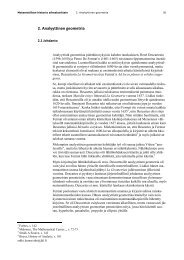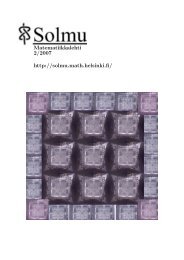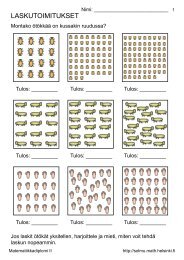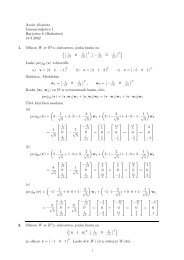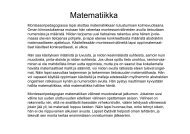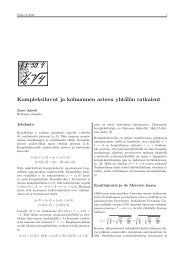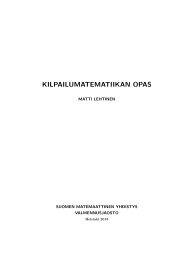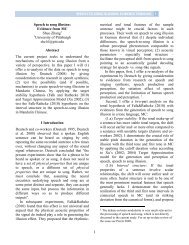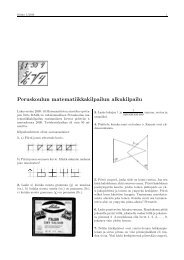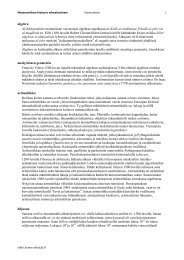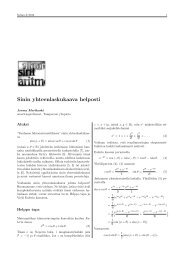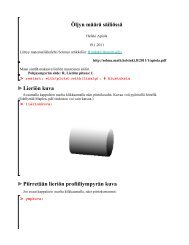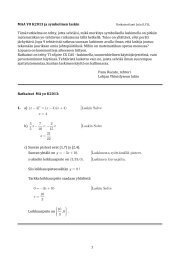Non-Newtonian turbulence: viscoelastic fluids and binary mixtures.
Non-Newtonian turbulence: viscoelastic fluids and binary mixtures.
Non-Newtonian turbulence: viscoelastic fluids and binary mixtures.
Create successful ePaper yourself
Turn your PDF publications into a flip-book with our unique Google optimized e-Paper software.
22 1. <strong>Newtonian</strong> <strong>turbulence</strong><br />
pushed to the left by a burst of acceleration <strong>and</strong> comes nearly to a stop before<br />
being rapidly accelerated upward by a fluctuation roughly equal to 30 times the<br />
root mean square value.<br />
The acceleration a of a fluid particle in a turbulent flow is given by the Navier-<br />
Stokes equation:<br />
a ≡ du<br />
= −∇p + ν∆u + f (1.63)<br />
dt<br />
Provided f is a large scale forcing <strong>and</strong> Re is large enough, the statistics of a<br />
is essentially determined by that of pressure gradients. Experimental data [18]<br />
indicate that the acceleration is an extremely intermittent variable <strong>and</strong> the shape<br />
of its pdf is a stretched exponential (fig. 1.5).<br />
Figure 1.5: Probability distribution functions of a normalized acceleration component<br />
at three Reynolds numbers. The solid line is a stretched exponential parameterization<br />
of the highest Rλ data, the inner dotted line is a gaussian for reference.<br />
Inset: flatness F = 〈a 4 〉/〈a 2 〉 2 as a function of Rλ [18].<br />
Let us now derive the shape of the acceleration pdf by means of simple phenomenological<br />
arguments. By definition<br />
δuτ<br />
a ≡ lim<br />
τ→0 τ<br />
� δuτη<br />
τη<br />
(1.64)<br />
where τη is the eddy turnover time associated with the Kolmogorov dissipative<br />
scale η. The velocity fluctuations along a particle trajectory may be considered as<br />
the superposition of different contributions from eddies of all sizes. In a time lag<br />
τ the contributions from eddies smaller than a given scale ℓ are uncorrelated <strong>and</strong><br />
one may then write δuτ ∼ δuℓ. We assume that ℓ <strong>and</strong> τ are linked by the typical<br />
22



